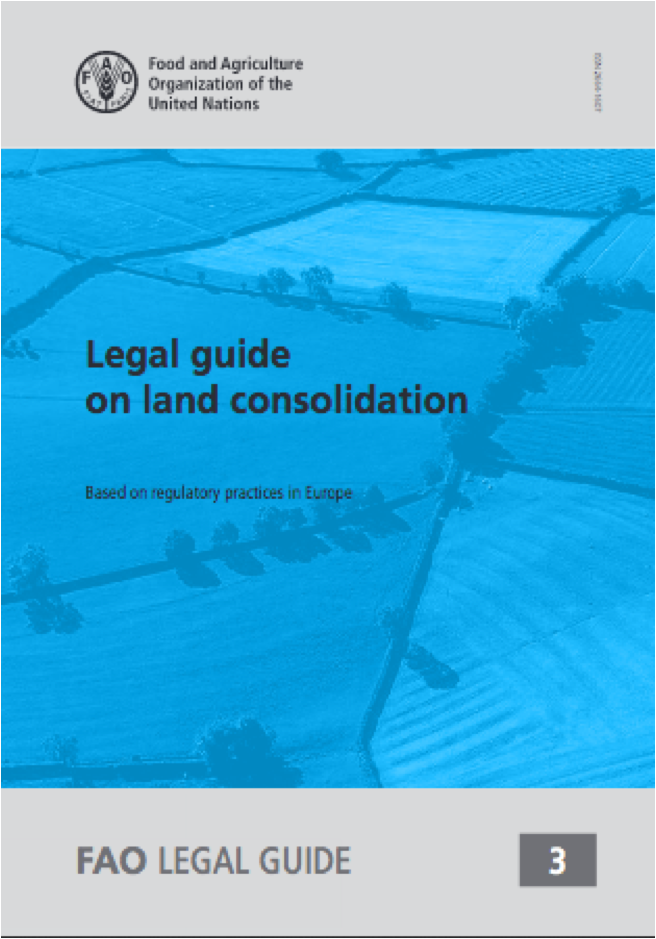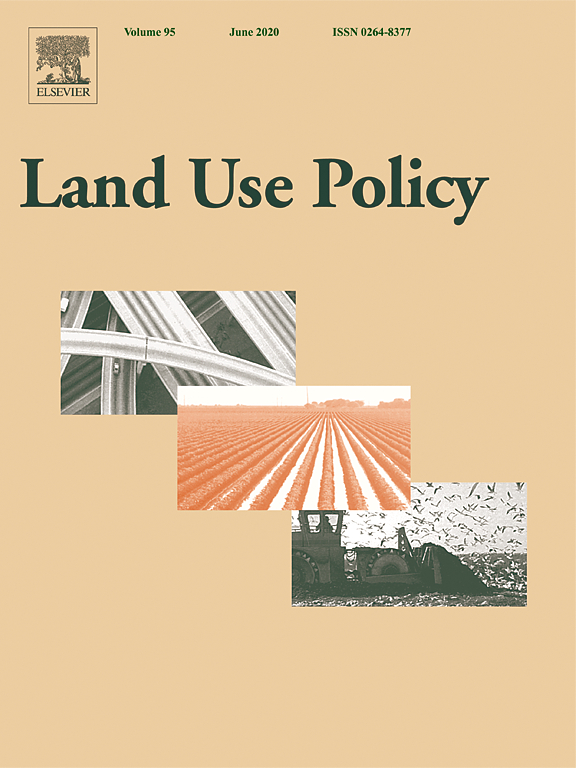
Topics and Regions
Romy leads the development of Land Portal's Country and Thematic portfolios, as well as the curation and ingestion of land-related publications and statistical datasets.
She is a communications specialist and policy advisor/project manager with more than 20 years of experience. She has worked previously with Embrapa (Brazil), CIFOR, FAO, GIZ, amongst other organizations on topics such as community forest management, payments for environmental services and agriculture & food security policy.
For the last 10 years her work has focused on land governance while as a project manager. In 2015 she supported the Global Donor Working Group on Land to advocate and secure SDG indicator 1.4.2 on land tenure security.
Romy holds a BA in Journalism from the Federal University of Pará, Brazil, and an Master of Science in Environmental Governance from the University of Freiburg, Germany.
Details
Affiliation:
Location
Contributions
Displaying 111 - 120 of 123Legal guide on land consolidation
Land consolidation is a highly effective land management instrument that allows for the improvement of the structure of agricultural holdings and farms in a country, which increases their economic and social efficiency and brings benefits both to right holders as well as to society in general. Since land consolidation gives mobility to land ownership and other land rights, it may also facilitate the allocation of new areas with specific purposes other than agriculture, such as for public infrastructure or nature protection and restoration.
Land consolidation or…. can land markets solve land fragmentation?
It happened on the 29th of January 2020 in Bitola in North Macedonia. More than 200 landowners from Egri village gathered in Bitola’s theatre, taking turns to vote on the Land Consolidation Plan. The serious faces of men and women, old and young, were a sign that they may have been as nervous as we were ourselves. The voting on the first majority based land consolidation ever in the country was coming to an end. And then the result was there….. 83% in favour of land consolidation! The villagers were cheering. Our team was overwhelmed by emotion.
Safeguarding tenure rights in land consolidation
I was assigned to lead the preparation of the assessments and amendments to the land consolidation legislation in 2016. That appeared to be a burdensome task. The first two land consolidation projects in North Macedonia were initiated according to the existing Land Consolidation Law and the implementation was blocked. The Law simply had no legal solutions for the identified field situations. The problems were many and each was ascending the other in its magnitude and sensitivity.
Multi-purpose land consolidation in support of sustainable development
The increasing number of salmon in the Skjern River in Denmark is a positive sign, as the Danish salmon is the only strain of wild salmon left in Danish rivers. Before the Skjern River Nature Restoration Project, the salmon had almost gone extinct owing to the state of the environment. The project area now offers ideal conditions for flora and fauna and has already acquired great natural value. In fact, it has already grown into a bird site of national importance.
Development of a land consolidation instrument in the Republic of Azerbaijan
The Republic of Azerbaijan implemented during the late 1990s a land reform, which distributed the state owned agricultural land to the rural population but also led to excessive land fragmentation and small farm sizes. Agricultural and rural development is high on the political agenda in Azerbaijan and is seen as an important sector to development as part of an overall strategy of reducing dependency on income from oil production.
FAO recommendations on land consolidation legislation
Most countries in Western Europe have a long tradition for implementing land consolidation projects. In Central and Eastern Europe, land reforms from 1990 on in most countries resulted in farm structures characterized by excessive land fragmentation and small average farm sizes. Most CEE countries have introduced land consolidation instruments to address the structural problems. FAO has from 2000 on supported land consolidation in the region.
Land Consolidation and Land Readjustment for Sustainable Development – the Issues to be Addressed
From 9 to 11 November 2016 the ‘symposium on land consolidation and land readjustment for sustainable development’ was held in Apeldoorn, the Netherlands. The symposium was a joint initiative from FIG commissions 7 and 8, the Food and Agriculture Organization of the United Nations (FAO), LANDNET, the Dutch Cadastre, Land Registry and Mapping Agency, and supported by Global Land Tool Network (GLTN) and the World Bank. About 200 participants from 50 countries shared their experiences and knowledge about state of the art practices of land consolidation and land readjustment across the world.
Land Use Policy
Land Use Policy is an international and interdisciplinary journal concerned with the social, economic, political, legal, physical and planning aspects of urban and rural land use. It provides a forum for the exchange of ideas and information from the diverse range of disciplines and interest groups which must be combined to formulate effective land use policies.
Land reform and land fragmentation in Central and Eastern Europe
It has often been stated that land fragmentation and farm structures characterized by small agricultural holdings and farms divided in a large number of parcels have been the side-effect of land reform in Central and Eastern Europe. This article reports the findings of a study of land reform in 25 countries in the region from 1989 and onwards and provides an overview of applied land reform approaches. With a basis in theory on land fragmentation, the linkage between land reform approaches and land fragmentation is explored.
Land governance for development in Central and Eastern Europe: Land fragmentation and land consolidation as part of Sustainable Development Goals
Most transition countries in Central and Eastern Europe (CEE) face enormous challenges in developing a viable land structure, requiring a set of measures which is unprecedented in its scale and intensity to speed up this process. Analysis of policy initiatives in CEE countries illustrates that options for solving fragmentation and small scale of farms have concentrated on particular instruments like land consolidation and land banking.











